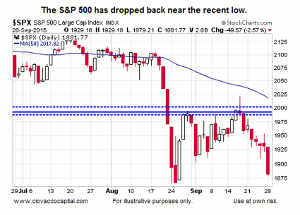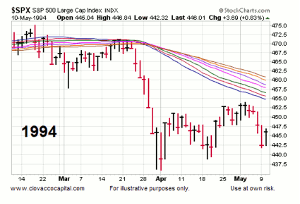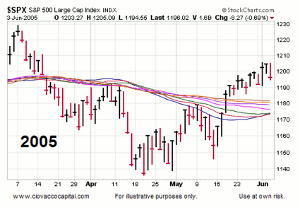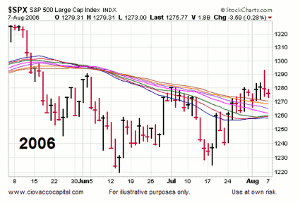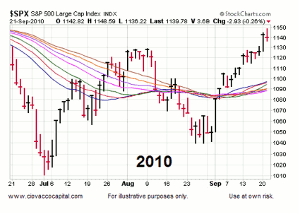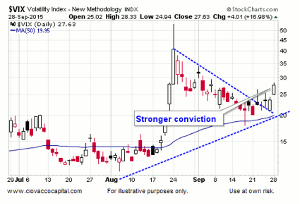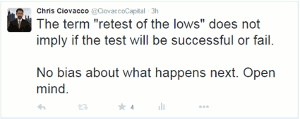A retest can stay above the recent low, hit the recent low, or exceed the recent low, and Chris Ciovacco, at Ciovacco Capital Management, points out that the key is that a stock trader needs to see evidence of a sustainable turn on his time frame, which, as Chris illustrates, is something that has not happened over the past few weeks.
No Improvement so Far
Given the severity of the sell-off in stocks in late August, it was not surprising to see the subsequent rally attempts fail. As we noted numerous times in recent weeks, including September 3 and September 17, bottoms tend to be a process.
Retests Take Many Forms
The expression "retest of the lows" covers numerous market scenarios, including the historical cases shown below when a higher low was made. A retest can stay above the recent low, hit the recent low, or exceed the recent low. The key is we need to see evidence of a sustainable turn on our time frame; something that has not happened over the past few weeks.
Few New Hints on Monday
There was very little in Monday's session that said "today is the final low." For example, the VIX fear index held on to most of Monday's gains into the close. The chart of the VIX below has shown some renewed improvement in recent days.
The S&P 500 (VOO) also closed near the session low, with long-term Treasuries (TLT) closing near the session high, which is a fear look, rather than an imminent and sustainable bottom look. Monday's volume on SPY was above average (in contrast to many recent green days when SPY volume was below average).
Retest Is Not a Prediction
Experience says it remains important to keep an open mind about all outcomes (bullish and bearish). The term retest can bring some bias to the table if we are not careful.
Investment Implications—The Weight of the Evidence
Could stocks post a green day Tuesday? Sure, green days occur all the time during downtrends. We want to see evidence of a sustainable turn. That evidence can begin to surface at anytime, but under our approach we need to see it rather than anticipate it. Therefore, we continue to maintain a defensive-oriented allocation.
This entry was posted on Monday, September 28th, 2015 at 5:56 pm and is filed under Stocks—US. You can follow any responses to this entry through the RSS 2.0 feed. Both comments and pings are currently closed.
By Chris Ciovacco at Ciovacco Capital Management

